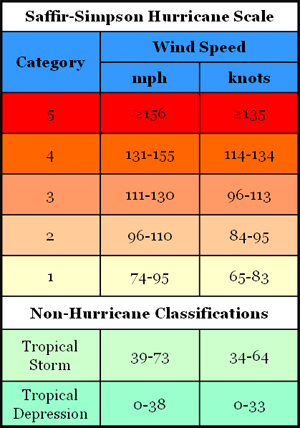According to the World Meteorological Organization (WMO), the maximum sustained wind is the factor that determines the intensity of a tropical cyclone. The maximum sustained wind is calculated in a 10 minute average. While the international classification of storms has three levels, the Japan Meteorological Agency classification has four levels.

Image Source : http://article.sapub.org/10.5923.j.re.20130305.02.html
Due to this, the definition of a typhoon is different among Japanese and international standards. A tropical storm with a wind speed of more than 34 knots(nautical mile per hour)is considered a “typhoon” in Japan, while the international standards consider a wind speed of more than 64 knots as a “typhoon”.
The Joint Typhoon Warning Center and other US meteorological organizations use another type of scale, Saffir-Simpson Scale which is rationing 5 levels of sustained wind speed. A typhoon with a maximum surface winds greater than or equal to 130 knots is called a “super typhoon”, and a hurricane of Category 3. Because of different types of scales, a tropical cyclone weaker than Category 1 is not a “typhoon” in international standard, but are considered “typhoons” in Japanese standards.

Image Source : https://serc.carleton.edu/eslabs/hurricanes/2a.html
Other than the maximum wind, maximum gust is also utilized to portray the strength of winds in a shorter time period. The Japan Meteorological Agency regards maximum gusts as the average of 3 seconds, whereas the maximum wind is the average of 10 seconds. Moreover, the strength of a storm is not commensurate with the size. The dimensions of a storm is calculated by counting the radius of an area in which wind speed exceeds 15m/s.
References :
Digital Typhoon: The intensity and size of typhoons – units of pressure and wind. (n.d.). http://agora.ex.nii.ac.jp/digital-typhoon/help/unit.html.en
Categories: Environmental